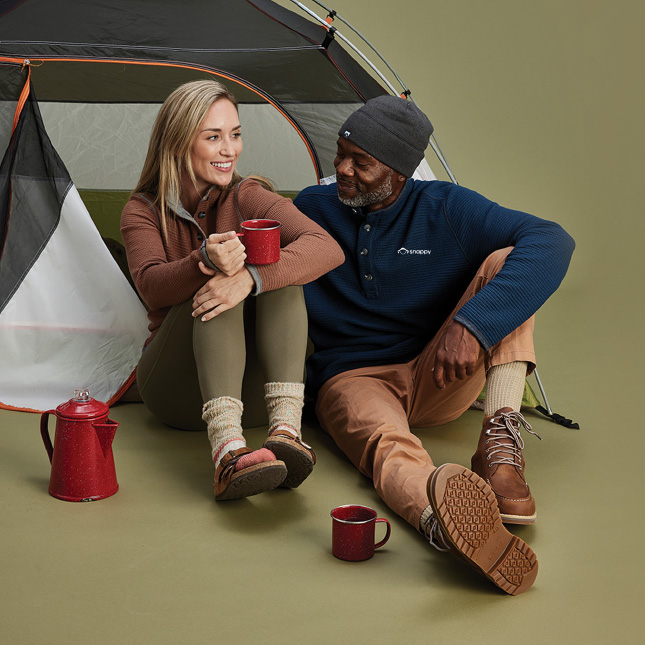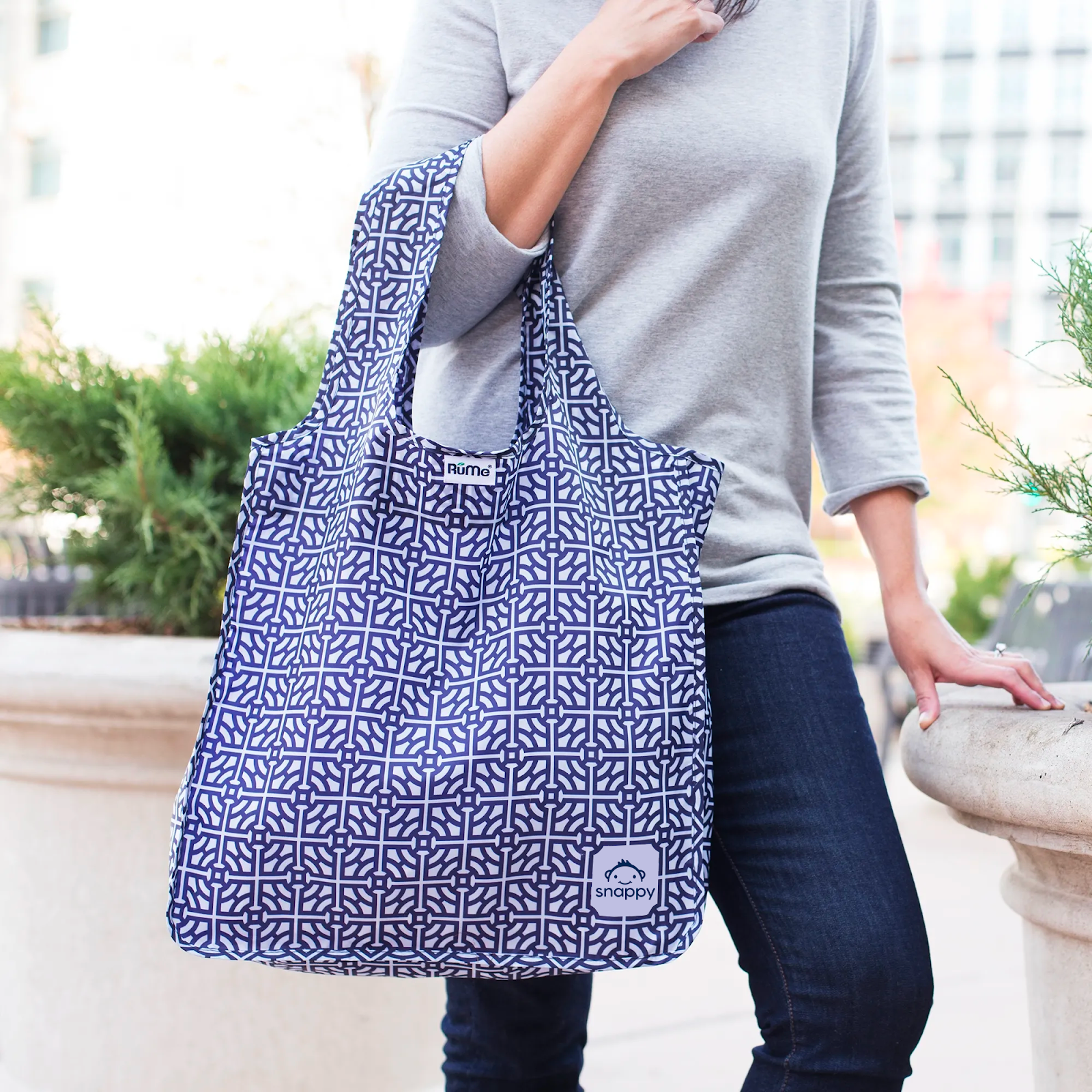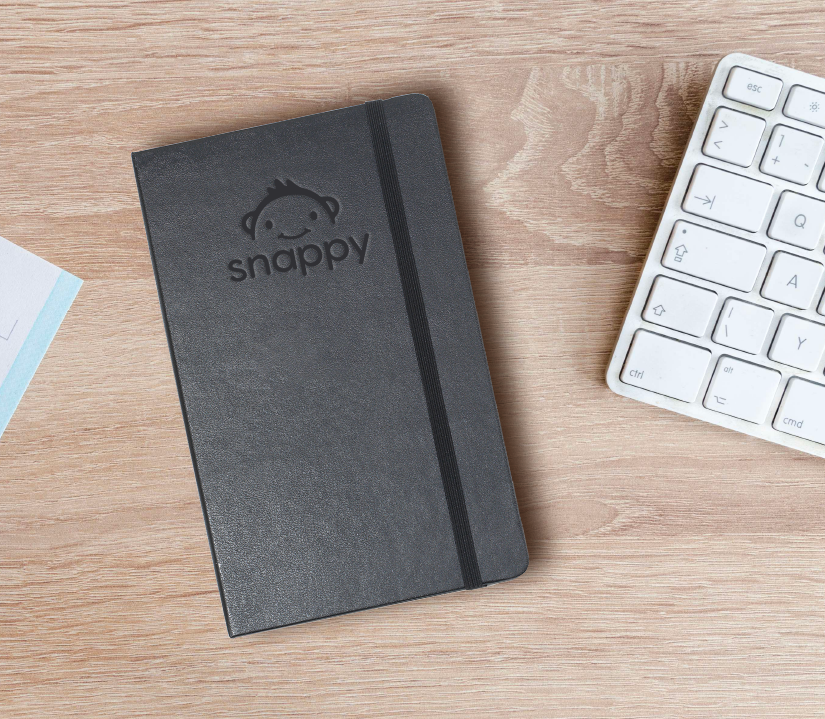The New Rules of Swag: A Strategic Framework for Meaningful Employee and Customer Gifting
.png)
There was a time when corporate swag meant drawers of branded stress balls, cheap plastic pens, and that stack of outdated logo polos in the supply closet. Those days are over.
Today, swag isn’t about giveaways. It’s about brand-building, creating connections, and driving business results.
Forget the box of leftover polos in the supply closet; corporate swag is no longer just a nice-to-have. It’s evolving from generic giveaways to strategic tools for connection and culture.
At Snappy, we believe branded merchandise should be intentional. It’s not just about sending stuff. It’s about sending the right message, at the right moment, to the right people. That’s why we created a framework to help organizations rethink their company swag ideas and unlock the real potential of branded gear.

A Four-Part Framework for Swag That Works
Strategic swag doesn’t start with choosing a branded item to send. It starts with purpose. Our framework gives teams a repeatable way to ensure their swag sends the right message, to the right person, at the right moment.
- Culture: Start With What You Stand For
Swag is one of the most visible expressions of your brand. It should extend your brand story, not distract from it. This means it should carry the tone, values, and energy your organization wants to be known for.
For some companies, that might mean playful and colorful gear. For others, it’s understated and elevated. Either is great, as long as it’s aligned with how your brand shows up in the world.
Ask Yourself:
- Would someone recognize your company just by looking at this item?
- Would your team be proud to wear it in public?
- Does it match the tone of your onboarding experience, website, or customer service?
Swag becomes meaningful when it reinforces your identity. It shouldn’t feel tacked on. It should feel like a seamless extension of your culture.
Tip: Stay true to your culture. If your company is playful, lean into vibrant designs and quirky items. A more refined organization might choose subtle, minimalist swag. If your team wouldn’t be excited to receive or use the item, it’s a miss.
- Audience Insight: Segment Your Swag Like You Segment Your Customers
Just like your marketing strategy adjusted based on who you’re talking to, your swag should too. The biggest myth in swag? That one-size-fits-all all works. It doesn’t.
Swag should vary based on:
- Employee role or function: A field sales rep may value a travel-friendly backpack, while a remote engineer may appreciate home-office gear.
- Customer status: First-time buyers vs multi-year enterprise customers will likely warrant different levels of investment.
- Occasion: Onboarding swag is very different from anniversary recognition, which is different from a campaign touchpoint.
Tip: Build swag personas just like buyer personas. What do different groups value? What do they actually use? What will make them feel included or seen?
- Planning & Resources: Align Swag With Business Rhythms
Treat swag like any other strategic initiative. That means forecasting, budgeting, and planning with intention, not scrambling a week before a launch.
To plan effectively:
- Map out your key campaigns, events, and milestones
- Align with quarterly or annual goals (like improving onboarding or reducing churn)
- Consider your budget per recipient and per moment
- Factor in production and shipping timelines to avoid delays
Tip: Build a swag calendar just like you would a content or marketing calendar. Include events, lifecycle touchpoints, and budget windows. This prevents reactive decisions and makes space for creative, meaningful execution.
- Purposeful Gifting: Make Every Swag Item Mean Something
Swag without strategy is just stuff. It becomes powerful when it’s tied to a specific moment or message. A water bottle is just a bottle, unless it’s sent on someone's first day with a note welcoming them to the team.
Think about swag as a memory cue. When it’s linked to a meaningful occasion, it becomes a reminder of how someone felt in the moment…how your company made them feel in that moment.
Some examples:
- Welcome kits: Branded notebooks, apparel, and desk accessories that say “we’re glad you’re here.”
- Milestone celebrations: Customized gear marketing anniversaries, promotions, or product launches.
- Event follow-up: Items sent post-webinar or conference to deepen the connection and drive next steps.
- Customer thank yous: Swag that reinforces loyalty and shows appreciation after renewals or referrals.
Tip: Tie swag to key employee and customer lifecycle moments across departments. HR, People, Sales, Marketing, and Customer Success teams can all use swag to support engagement goals.

Swag Can Power Teams Across Your Organization
The beauty of the strategic swag framework is flexibility. While many people assume swag is in the domain of HR or People teams, the reality is that every department can benefit from using swag intentionally. When aligned with company culture, tailored to the right audience, planned in advance, and tied to a specific moment, swag becomes a high-impact tool for connection, recognition, and results across a business.
People & HR Teams use swag to build belonging and reinforce company values from the very beginning. A thoughtful onboarding or welcome kit can set the tone for a new hire’s experience and reduce first-week friction. Throughout the year, swag also supports internal initiatives, wellness campaigns, and employee milestone celebrations in a tangible, memorable way.
Sales teams are increasingly learning into swag to warm up cold leads and stand out in crowded inboxes. When used strategically, a well-chosen branded item sent during early outreach or after a key conversation can shift perception and move a deal forward. Swag helps humanize outreach and reinforce your message when timing matters most.
Marketing teams rely on swag to extend campaign impact, share appreciation with customers, and boost brand engagement. Whether it’s a post-webinar surprise, a booth giveaway with a clever tie-in, or a branded follow-up item tied to a gated piece of content, swag can turn passive interest into active brand affinity. When swag is creatively aligned with a campaign theme, it’s more than just merchandise, it becomes a message.
Customer success teams use swag to celebrate, surprise, and show appreciation. A thoughtfully timed gift after a customer renewal, a product milestone, or a support win can strengthen loyalty and make partners feel valued. Especially in high-touch B2B relationships, swag helps reinforce a sense of partnership that transcends transactional interactions.
Internal communications and culture teams use swag to rally employees around new initiatives, product launches, or cultural moments. From limited-edition gear tied to quarterly goals to recognition items for internal shoutouts, swag becomes a shared symbol of progress and pride.
At every stage, and in every department, swag isn’t just a giveaway. It’s a tool to build connections, reinforce values, and support your organization’s goals. With the right strategy, any team can make swag both meaningful and impactful.

Swag That Sends A Message
Corporate swag has entered a new era, one where branded merchandise isn’t just a cost center or a nice-to-have. It’s a message in an onboarding package. A branded expression of your company’s values. A chance to make someone feel seen, connected, and proud to be an extension of your company’s journey.
With the right strategy, swag becomes a catalyst for engagement across every department, every lifecycle comment, and every relationship – internal and external.
The new rules of swag are clear:
- Start with culture
- Know your audience
- Plan with intention
- Make every moment matter
By embracing this framework, your organization can move beyond transactional gifting and create truly meaningful brand moments. Swag isn’t just stuff; it’s strategic storytelling delivered through thoughtful, branded moments.





